TRAVELOGUES FROM


TRAVELOGUES FROM

With Remote Lands you’ll travel with people who have made Asia the solitary focus of their own lifelong adventure.
As our guest, in the continent that our north American founders Catherine and Jay have adored and explored for decades, you’ll discover Asia on a journey that is completely, authentically your own, adapted from our own remarkable experiences and adventures over the years.

Whether you’re seeking tranquillity or transformational activity (or something in between), your Asian journey springs from the deep understanding we develop of your wishes and expectations, and from our own experience as discerning, demanding travelers.

A journey that flows at your pace and follows your path, effortlessly accommodating any diversion with the aid of 24/7 on-ground support across the continent.
A journey that is delivered to the very highest standard of service, wherever that path takes you.
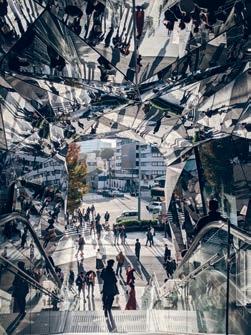


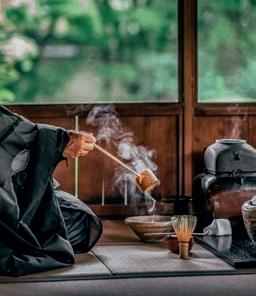

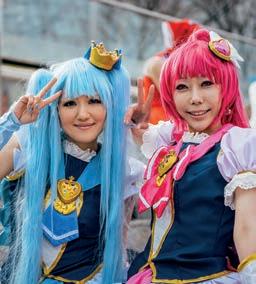

There are many reasons why Japan hits the sweet spot for exclusive travel. Safe, convenient, and modern, yet blessed with traditions the locals guard with huge pride, the country offers the best of everything. In fact, the strict quality control in Japan is legendary and is a major factor in the country’s appeal. From ornate lunchtime bento boxes to ancient traditions steeped in ritual, the Japanese are famously exacting in their attention to detail. That’s not to say that it is a country that doesn’t know how to let its hair down. Tokyo is one of the world’s biggest cities and one of its liveliest. Thriving cultural scenes can be found around the country. With stunning, often pristine, landscapes rounding out the picture, Japan continues to be a global leader in giving visitors exactly what they crave. In the following pages, we’ll look at the variety of ways the country beguiles.
Remote Lands
Co-Founder, CEO
Remote Lands
Co-Founder, COO
Editor-In-Chief Designer
Contributors
Director of Product
Digital Marketing
VP of Business Strategy
Marketing Specialist & Content Creator
Head Offices
Catherine Heald
Jay Tindall
Duncan Forgan
Vatanya Bongkotkarn
Duncan Forgan, Jordan Hammond, Travelogues Staff

Trinity Nguyen
Liam Vickers
Melisa Novick
Maneenart Srisakulpanich
Remote Lands, Inc., 120 East 56th Street, Suite 1600 PH, New York, NY 10022 USA

+1 (646) 760-2048
Asia Offices
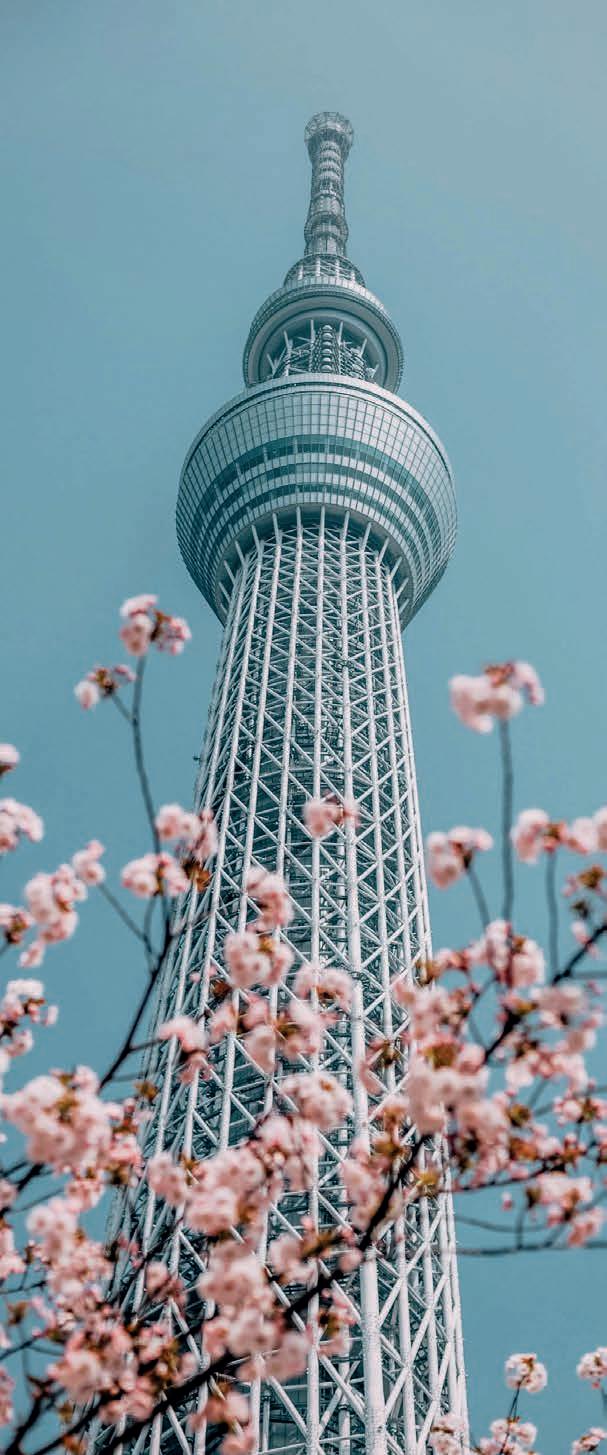
Remote Lands (Thailand) Co., Ltd., Mahatun Plaza Building, 7/F, 888/74 Ploenchit Road, Lumpini, Pathumwan, Bangkok 10330
+66 (094) 957-3143
Production
The Creative Partnership
david@creativethailand.com
+66 (0) 2 285 4721
THERE IS NOWHERE LIKE JAPAN.
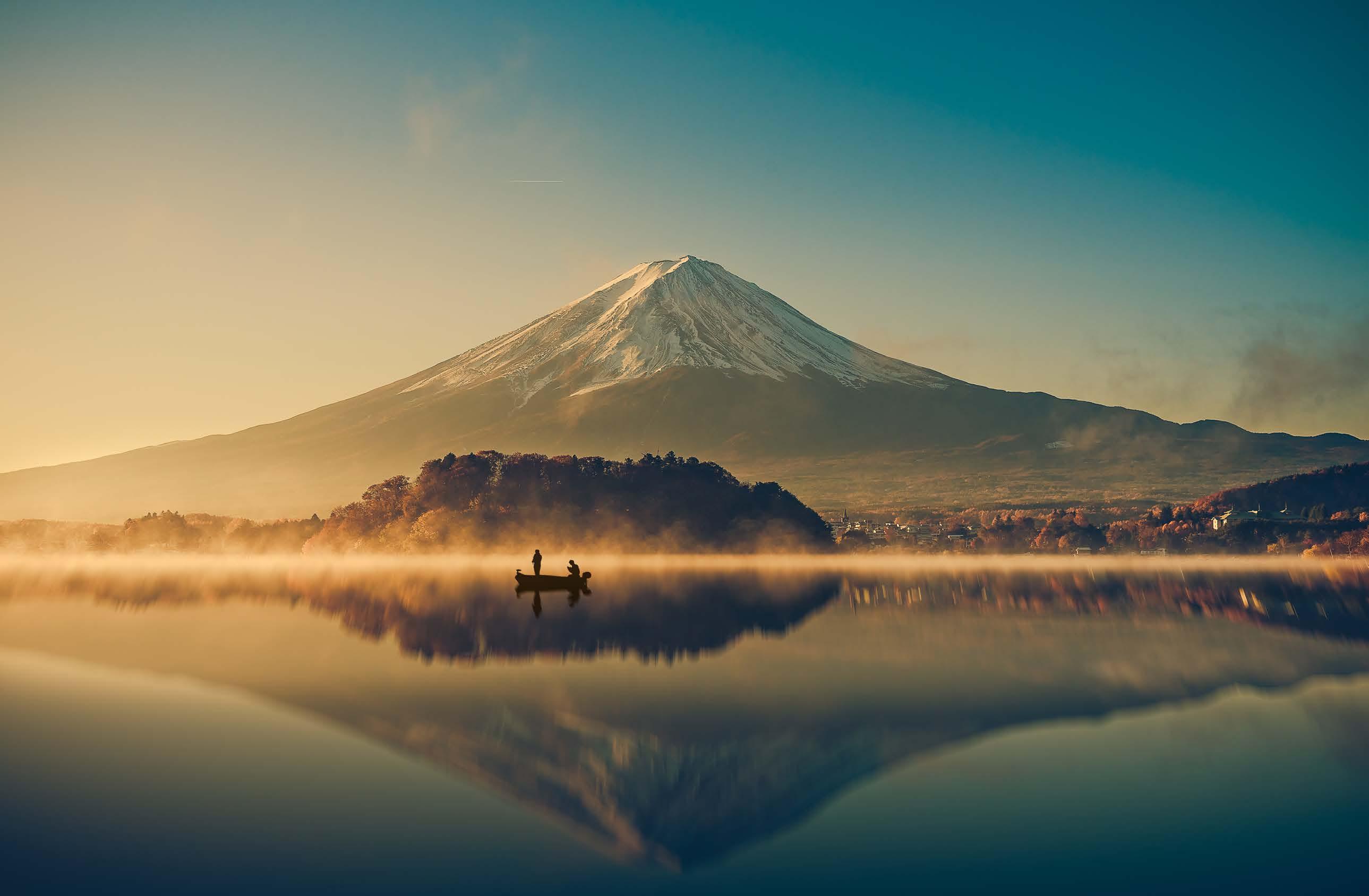


The most populous metropolitan area in the world, Tokyo celebrates its ancient traditions while embracing the latest in technology, fashion, and trends
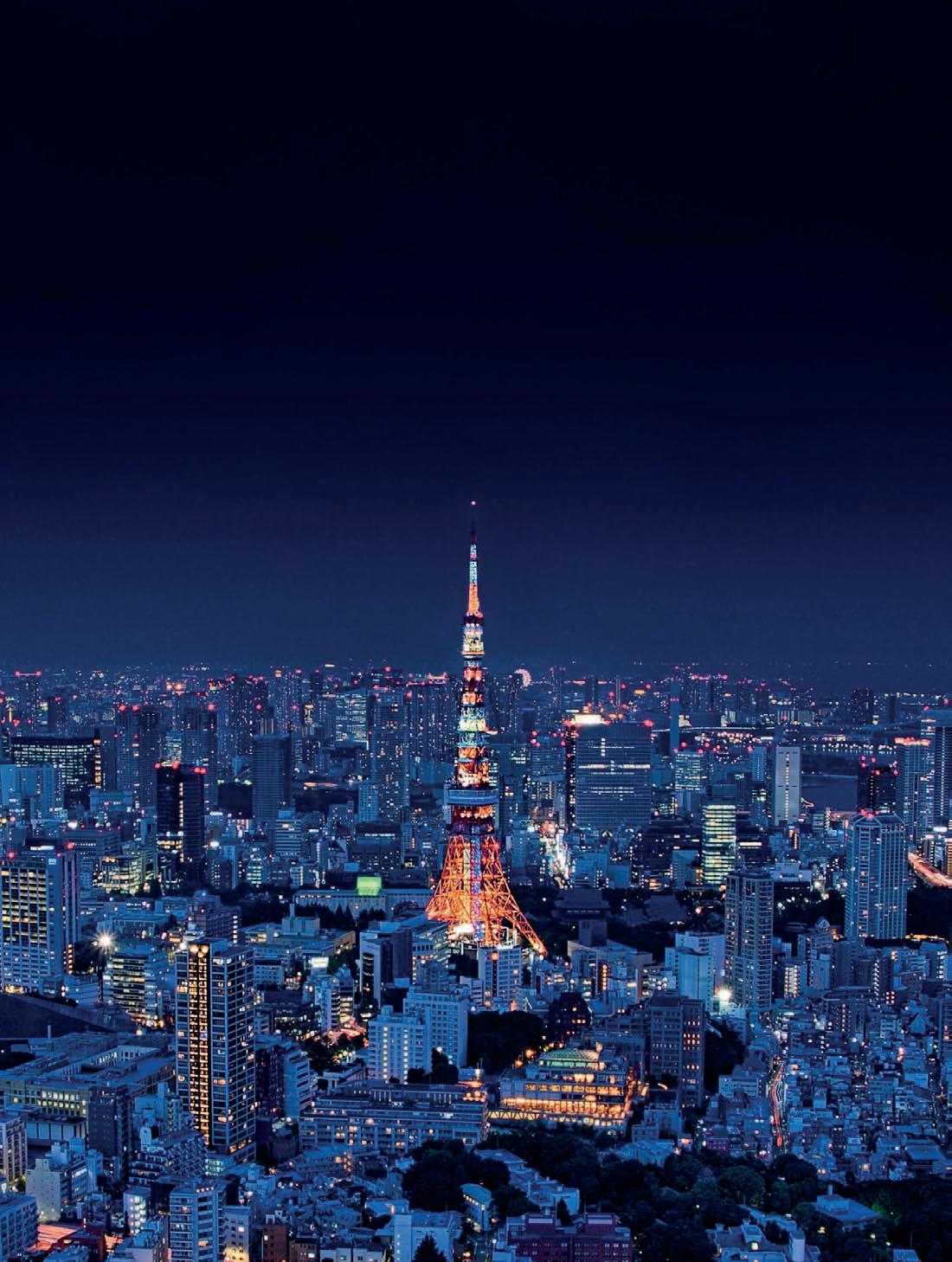
Tokyo’s Akihabara district isn’t a place for the noise and neon averse. The spiritual home of otaku (geek) culture, this enclave to the northeast of the city center conforms to preconceptions of Japan’s capital as a place of constant sensory overload. Garish, hyperactive emporiums sell every electronic gadget a tech-lover could ever crave. They sit cheek by jowl with book and comic stores packed with bespectacled teens browsing new and vintage manga and anime.
A five-minute hop away on the Metro, a different Tokyo awaits. Heading north from Ueno Station, the buzz of the city gives way to the vast green expanse of Ueno Park. Couples unwind by the park’s many lakes and elderly gentlemen peruse newspapers on shaded benches. The park is considered by many to be Japan’s premier spot for arts and culture. The Tokyo National Museum is here and so too is the National Museum of Western Art, which is housed in a building by Le Corbusier. Nature abounds here also. Egrets and cormorants flit between thick stands of gingko. The cherry tree count, meanwhile, comes in at around 1000 making this one of Japan’s most evocative spots during the spring cherry blossom season, a fact commemorated in verse by Matsuo Basho, the celebrated poet.

In terms of appearance and personality they inhabit different solar systems. However, Ueno and Akihabara are integral stops on any Tokyo itinerary and both representative of the city in their own special way.

Like other great “sprawlers” such as New York and London, Tokyo’s geographical looseness has fomented an array of enclaves that are as compelling as they are diverse.
Ueno and Akihabara are far from the only contrasting near-neighbors in the city. Glitzy Ginza, with its super deluxe shops and exclusive ryotei (introduction-only restaurants), is a stone’s throw from the commercial center of Shinbashi where armies of salarymen in identikit suits find post-work respite by downing gallons of sake and participating in raucous karaoke sessions. Meanwhile, over in Shinjuku, Kabukicho, the city’s most notorious redlight district, is offset by the beauty of the verdant Shinjuku Gyoen National Garden, a mere fifteen-minute walk away.
Tokyo’s geographical looseness has fomented an array of enclaves that are as compelling as they are diverse
Tokyo is rightfully regarded as a world leader in fashion and shopping opportunities are multifold. Ginza and Omotesando are known as high fashion Meccas and feature a multitude of flagship stores with Japanese brands such as Comme Des Garcon and Issey Miyake located alongside the likes of Prada, Gucci and Louis Vuitton. More down-market, but more visually enthralling, is Harajuku, Japan’s center of youth culture and fashion. Here, throngs of (mostly) young girls use the crowded streets as a catwalk for outlandish and often provocative outfits, inspired by everything from manga and anime to western musical sub cultures such as hip-hop and glam rock.
In Tokyo, there’s always something going on at street level. However, the city also rewards when viewed from an elevated perspective. At an impressive 634 meters, the Tokyo Skytree in the Sumida area of the city, is the tallest structure in Japan and the views over the metropolis and out towards Mount Fuji are as stupendous as you might expect.
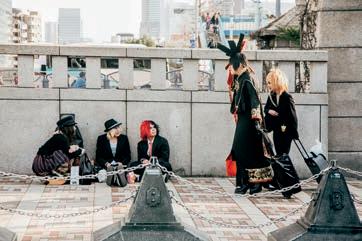

Although gloriously random in many ways, one aspect in which Tokyo achieves near perfect consistency is in its dining options. In fact, such is the near uniform brilliance of the food here you could be forgiven for assuming that the authorities had threatened severe punishments on substandard cooks. There doesn’t seem to be any. In 2010, Tokyo surpassed Paris as the city with the most Michelin-Star rated venues and upscale dining can encompass everything from lavish kaiseki (multi-course) dinners to simple – but often prohibitively expensive – Japanese favorites such as sashimi and yakitori. Visitors can get first-hand experience of Japan’s culinary traditions by learning how to prepare sushi under the expert tutelage of a top chef.

Tokyo’s nightlife scene is just as vibrant. Bars and venues are everywhere and range from casual izakayas (drinking restaurants) and laid-back venues where music-obsessed proprietors take time out from mixing cocktails to select items from vast collections of vinyl to cutting edge design bars and super-clubs.

One of the most charismatic spots is Golden Gai in Shinjuku. A network of tiny alleys, connected by even narrower passageways, Golden Gai plays host to over 200 shanty-style bars, many with room for around six patrons or less. Many of the bars are geared towards the affinities of their owners and customers and themes vary from British punk rock to horse racing and Chinese board games. Obsessive, anarchic and completely one of a kind, Tokyo is a city that revels in such unlikely juxtapositions.
Aman Tokyo

Sleek and serene, Aman’s Tokyo address spans the top six floors of a 38-storey skyscraper in the business district Otemachi.


Baseball was introduced to Japan during the Meiji Period around the late 1870s. An American English professor is thought to have been the first on the island nation to import the sport, but baseball really started to gain traction in Japan during the first half of the 20th Century. In the post-World War II period, American GIs who remained overseas continued to promote baseball heavily, and it didn’t take long for Japanese corporations to pick up on the buzz and start sponsoring teams.
Japanese baseball fans are known to devote themselves entirely to their chosen professional, minor, and even high school league teams, with highly detailed celebrations that get specific enough for certain players to have their own personalized cheers that fans memorize. Attending a game in Japan is an astoundingly interactive affair, with colorful rally towels, balloons, and even umbrellas constantly waving in the air.
With the roots of Japanese baseball tracing back to the U.S., it’s no surprise that the spectacle surrounding games has also developed to feature other aspects of sports like American football. Many of the teams in the Nippon Professional Baseball league – or the NPB, which is considered the highest level of professional baseball in Japan – commonly have cheerleading squads that perform elaborately choreographed dance routines on the field.
Japanese baseball games have also adopted and developed the American tradition of enjoying stadium snacks and drinks during a game. Yet instead of the classic beer man trolling the rows and aisles with his bucket of cans in the likes of Yankee Stadium or Wrigley Field, Japanese spectators are more likely to flag down an “uriko,” or a “beer girl,” as they circulate the stands. Beer girls typically have a keg weighing some 25-35 pounds strapped to their back as they pour individual cups of beer for fans.
In Japan, it is not uncommon for fans to remain on their feet cheering for the entire game. Much more than just singing a round of “Take Me Out To The Ballgame,” Japanese fans often cheer with their whole bodies, dancing, screaming, and singing in unison as though they met to practice before the game – and it’s entirely possible that they did.


With jaw-dropping beauty and fabulous art centers to appreciate, the Seto Inland Sea is one of Japan’s true unsung treasures
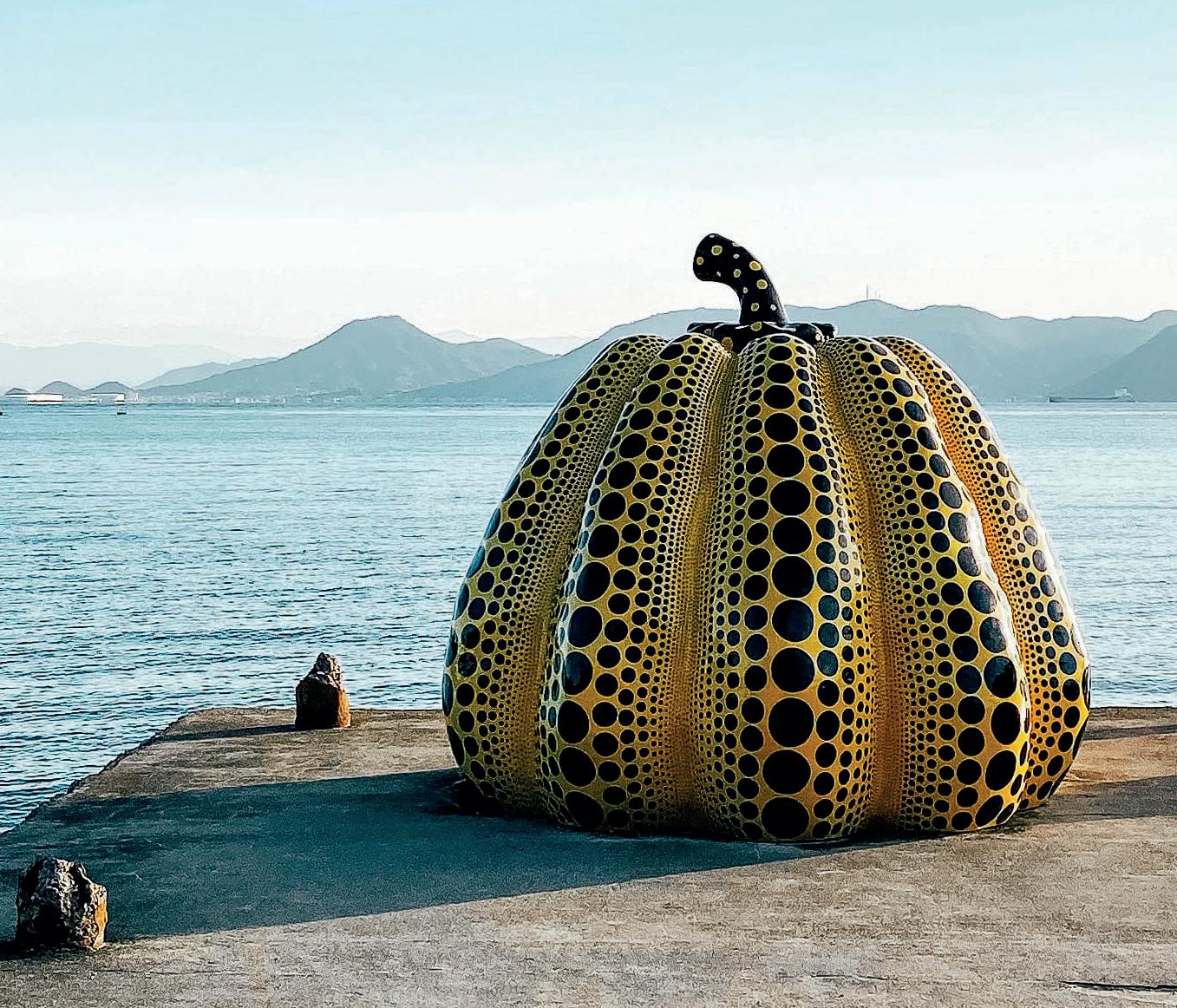
One of Japan’s most beautiful areas, The Seto Inland Sea (Setonaikai) is also an underrated — or, more accurately, overlooked — destination.

Squeezed between Honshu, Shikoku, and Kyushu, three of Japan’s four main islands, the area is studded with hundreds of alluring smaller green isles, which rise out of the seascape.
Long celebrated for its scenic manna, the area has emerged in recent years as a hub for art thanks to the success of the Setouchi Triennale art festival.
Naoshima, the artiest of all the art islands in the Seto Inland Sea, is the location of the Benesse Art Site, which offers a unique opportunity to see some of Japan’s best contemporary art in gorgeous natural settings.
Museums and numerous outdoor sculptures are situated around the coast. These include Yellow Pumpkin by Yayoi Kusama, which has become a symbol of Naoshima.
Naoshima now has a number of world-class art galleries and installations and has attracted creative types from all over Japan to set up businesses here. The art movement has not stopped at Naoshima’s shores, either, with museums and art sites popping up on other islands in the Inland Sea. ...
Naoshima now has a number of world-class art galleries and installations and has attracted creative types from all over Japan to set up businesses there
The influx of creative types has given a timely boost to the economic fortunes of this part of Japan. The Seto Inland Sea has a long and rich history, with evidence of human habitation dating back to the Jomon period (14,000-300 BCE). The area has long been a hub of trade and commerce, and it played a key role in the development of Japan’s economy. Today, the Seto Inland Sea is known for its beautiful natural surroundings, with numerous small islands, cliffs, and beaches dotting its shores.
One of the most notable features of the Seto Inland Sea is its showpiece bridges, which connect the various islands and ports. The most famous of these is the Great Seto Bridge, which stretches for 13.1 kilometers across the sea and connects the islands of Honshu and Shikoku. This bridge, which was completed in 1988, is one of the longest bridge systems in the world and is an engineering marvel.

The Seto Inland Sea is also home to a diverse array of marine life, including dolphins, whales, and a variety of fish species. The area is a popular destination for fishing, and it is also home to a number of seafood processing and aquaculture businesses.
In addition to its economic and transportation significance, the Seto Inland Sea is also an important cultural and recreational area. The region is home to a number of temples, shrines, and other historical sites, and it is a popular destination for tourists.

Another of its top draws is the Shimanami Kaido, an expressway that links the main islands of Honshu and Shikoku, spanning the 70 kilometers between Onomichi City in Hiroshima Prefecture and Imabari City in Ehime Prefecture, crossing six out of the 700 local islands and seven bridges.

The Shimanami Kaido is one of the best cycling routes in Japan. On several courses with a rich variety of scenery, cyclists can enjoy riding in a great environment of scenic coastline, a stunning backdrop of mountains full of orange groves, and traditional Japanese countryside houses.
The most spectacular of all is the seascape views from the bridges. Another unmissable highlight in the area is Shodoshima, which is the second-largest island in the Seto Inland Sea. It is notable for its Mediterranean atmosphere (it’s home to numerous olive plantations), offering beaches, resorts, coastal scenery, and a mountainous interior with the Kankakei Gorge, one of Japan’s most celebrated beauty spots, as a centerpiece.

Benesse House

One of the best places to stay in the Setouchi area, Benesse House feels more like a gallery than hotel, with its minimal design, natural light and scattered contemporary artworks.

Our guests encounter facets of Asia unreachable to visitors through any other means.
They’re able to go deeper because our knowledge and networks go deeper, built up over our years of traveling, learning and making lasting local connections.
Each facet that’s revealed – the exotic, the restorative, the awe-inspiring, the life-enhancing – will carry you closer to the captivating heart of this extraordinary, kaleidoscopic continent.

Whether it’s cycling the Himalayas, meeting the Asaro mudmen of Papua New Guinea, or simply surrendering to breathtaking beauty and luxury on a Maldivian island idyll, your Asian exploration with us will touch, stir and lift the spirits.

Seamless, serene travel will give you the space to experience a journey not just of the body and mind but also of the soul, infused with a deep understanding of Asian peoples and cultures.
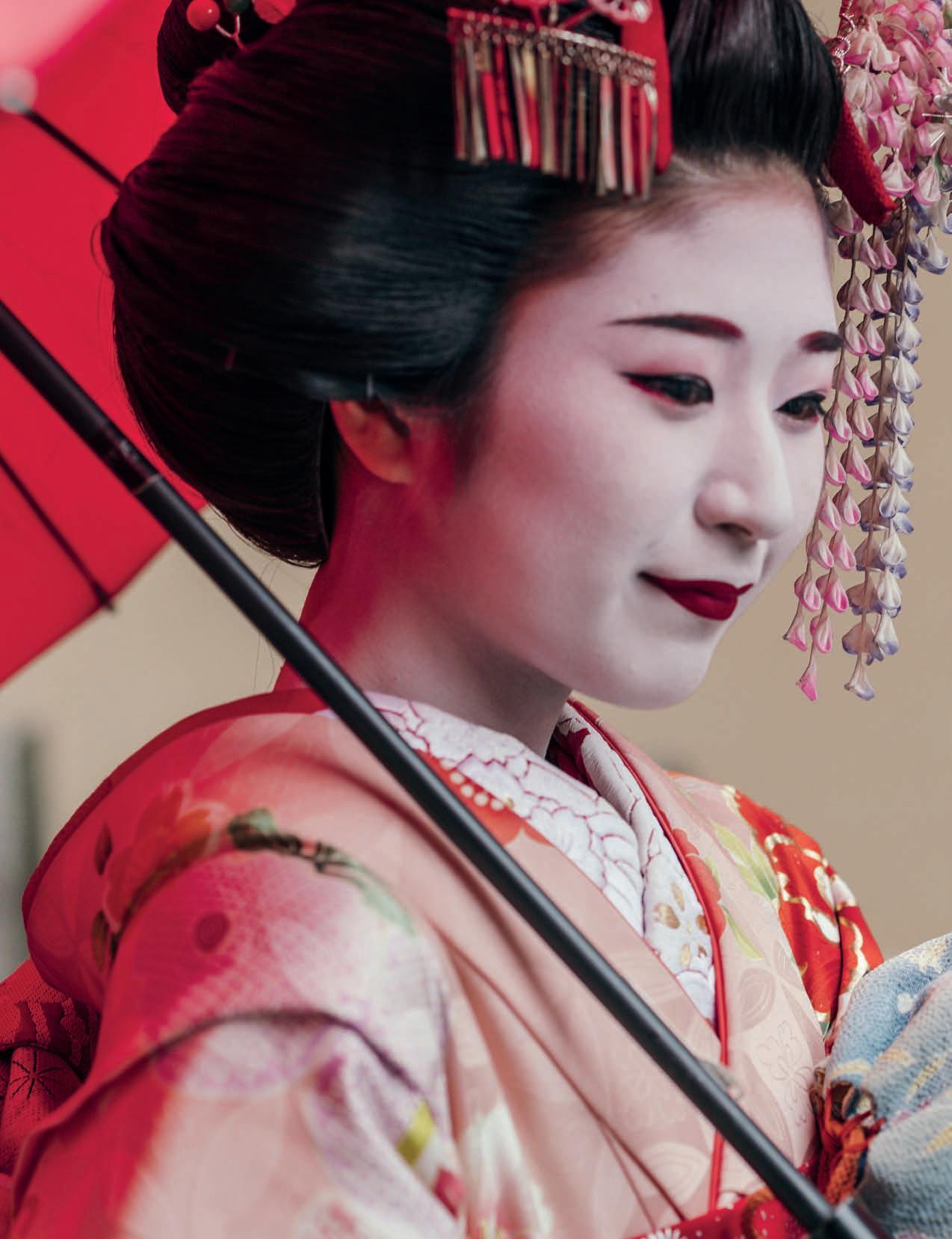
Like a riddle wrapped in an enigma, Japan has the capacity to at once befuddle and delight. Both familiar and resolutely alien to visitors, it has adapted and perfected aspects of modern western society while retaining its unique millennia-old traditions. And it is to these singular aspects of Japanese culture that we turn to over the following pages. Gain heavyweight knowledge of sumo, entertain the roots of geisha, and learn all about the refreshing and replenishing qualities of kaiseki dining and ancient tea ceremonies!


The history of sumo wrestling dates back nearly two millennia to its origins as a Shinto ritual that was performed in the growing season to honor the spirits. The Shinto deities, also called “kami,” were thought to be entertained and pleased by the wrestlers as they met in a purified ring, in turn leading to a bountiful harvest and good fortune. Most wrestlers follow rigid routines in which they exercise on an empty stomach and sleep after eating to help convert the 10,000-some calories they consume per day into mass and strength.
The rules that govern the world of sumo wrestling go far beyond merely dictating what happens in the ring. Wrestlers are expected to display traditional rikishi hair and clothing styles – including when not in the ring and going about their daily routines – and many other ancient traditions still apply today. But when it comes to rules in the ring itself, sumo is really pretty simple: two wrestlers meet in the elevated “dohyo” that is traditionally made of clay and covered in a layer of sand. Matches begin once both wrestlers touch the ground with both fists at the same time, and a match is over when either wrestler is thrown out of the ring or touches the ground with any part of his body aside from the soles of his feet.
Along with tradition, etiquette plays a critical part in sumo culture. As wrestlers are ranked according to performance and experience level, viewers in the crowd are arranged depending upon the price of their tickets. Ringside floor-level seats, often called “tamari” seats, are generally pricier and reserved for sponsors and those with connec-
tions, and other seats, which can broadly be categorized as “box seats,” are farther from the stage and typically don’t come with perks like food service.
There are myriad fascinating traditions that travelers can expect to see on display if they’re lucky enough to watch a match or visit a sumo stable. These include the symbolic pre-match purification of the ring with salt, the rinsing of mouths with a ladle of water, and ceremonial foot-stomping. The former two traditions harken back to the Shinto rituals of old and are meant to make the wrestlers clean enough to enter the purified ring, and the stomping of feet – also known as a “shiko” exercise – is meant to showcase a wrestler’s power and flexibility.
Visitors can get first-hand experience of sumo in Japan. Meet retired wrestlers to learn the intricacies of this ancient martial art. Don a ‘sumo suit’ to test yourself against these colossuses of the dohyō circle.

Originating in the 17th Century, during Edo period Japan, ryokans are inns that traditionally served travelers along the country’s highways. Many such establishments still serve such a functional purpose today with low prices and Spartan tatami-matted rooms. Others, however, are much more opulent and a stay in one is a major highlight of many Japan itineraries.
Despite an often-wild variation in prices across the spectrum, many ryokans have several things in common.
Food is usually taken very seriously, and most guests take their meals in their room. Meals are served kaiseki-style with multiple dishes featuring regional and seasonal specialties. The temperature the dishes are served at is key, so most ryokans are very stringent about punctuality for meals.
Most ryokan also feature common bathing areas. These tend to vary according to price range. While bathing areas or ofuro in more humble establishments are usually fairly simple affairs, many high-end ryokans have lavish facilities, often centered upon hot springs or onsen.
Ryokans can be found the length and breadth of the country, but are frequently concentrated around onsen, which, in volcanically active Japan, means practically everywhere.
Despite some common features, many of the best ryokans distinguish themselves with design or service quirks, opulence of bathing facilities and by the sheer quality of their food.
In Tokyo famous establishments include Hoshinoya Tokyo, which is a pillar of tranquility that rises among other glass and metal spires in the heart of the city. Kyoto is renowned for the quality of its ryokans with luxurious accommodations complemented by incredible dinners.
Outside of the cities, meanwhile, fabulous ryokans are dotted liberally around the Japanese countryside, often in unbelievably idyllic locations. One of our favorite locations is Kinosaki Onsen, which is conveniently located near Kyoto and Osaka in central Honshu.
Another prime spot is Yumoto, a small hot spring town in Nikko National Park. A visit here can be combined with a trip to Nikko, which is home to Toshugu: one of Japan’s most lavishly decorated Shinto shrines.

Located outside of Kanazawa, Kayotei is a traditional Japanese ryokan set within the forested hills of Yamanaka Onsen in Kaga. The Kayotei boasts 10 Sukiya suites arranged in the traditional style of a tea ceremony pavilion
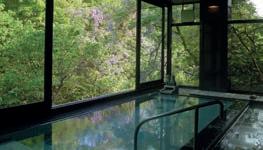

Geishas embody the spirit of ancient Japan and Japanese beauty

They study the ancient arts of flower arrangement, music, dance, tea ceremony, and more to entertain their patrons.
In Kyoto dialect, geisha are referred to as geiko (gei means “art” while sha translates to “person” and ko to “child”) or maiko
The former must be older than 20 while the latter is between the ages of 15 and 20. Some even go through the stage of shikomi for about six months to a year prior to ascending to maiko status, in which training begins only after completing junior high school.
There are five hanamachi or kagai (geisha districts) in the Ancient City—Gion Kobu (the largest), Miyagawa-chō, Ponto-chō, Kamishichiken (the oldest), and Gion Higashi.
These are home to what is currently estimated to be around 73 maiko, 186 geiko, and 132 ochaya (teahouses used for entertainment by geisha), according to the Kyoto Traditional Musical Art Foundation.
Traditionally, one is unable to enter an ochaya to be entertained by geiko or maiko unless an existing client has referred them and they’ve built up a rapport with the okaasan (meaning “mother,” but which also refers to the owner of an ochaya or okiya, a lodging
house for geisha). It was previously unheard of for foreigners to enter an ochaya unaccompanied, but due to economic difficulties some establishments have loosened their restrictions for the sake of keeping their business alive.
Training to be a geisha requires using kimono, makeup, instruments, and time to master skills, all of which come at a high price. A danna was a man of great means who would financially support a geisha’s livelihood. Their relationship, however, wasn’t inherently sexual nor romantic.
The most traditional and immersive way to interact with a geisha or maiko, is to hire them to act as hostesses for a group.
To begin dinner, your hostess will pour you a glass of beer, but she won’t pour one for herself. According to Japanese customs, you are to pour her beer for her, and she won’t move to take a sip until you toast her and begin drinking. At this time, it’s customary to tip her with an envelope of cash. Typical gratis amounts to 3,000 JPY (about US $30) for each entertainer.
During your meal, she’ll lead the conversation and might tell a few anecdotes to keep the flow going. After dinner entertainment often includes a musical performance and traditional Japanese drinking games.

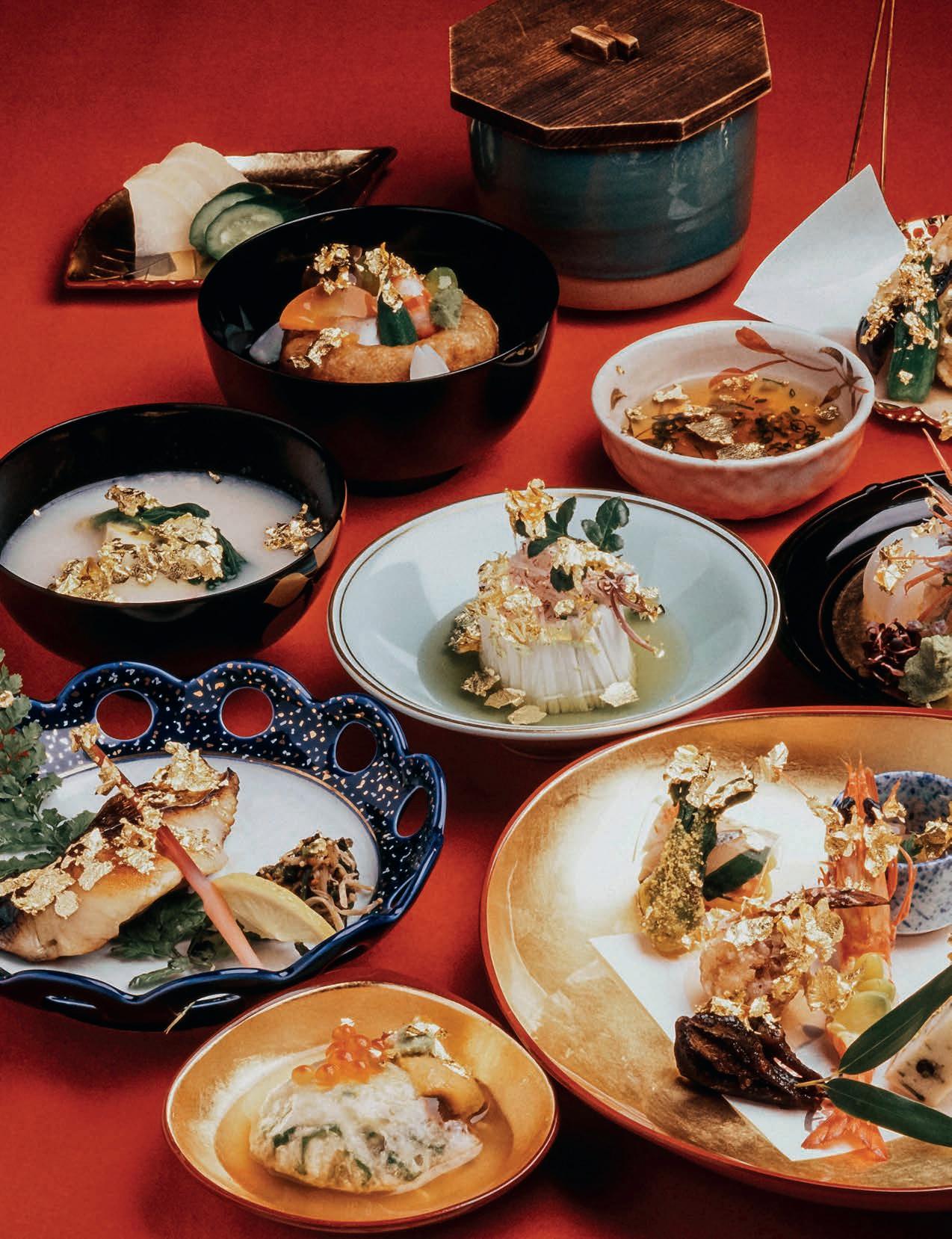

Japan’s famously refined culinary traditions reach an apex with kaiseki dining. Originally presented to the royal noble classes, kaiseki is the embodiment of omotenashi, which can be translated as meaning “wholehearted hospitality”.
In Japan multi-course menus have been favoured for centuries. Often compared to French haute cuisine, the art of kaiseki dining is Japan’s most sophisticated cooking style. This seasonally driven cuisine showcases fresh or preserved vegetables and seafood, presenting them in a refined, artistic manner.
Simply explained, kaiseki is a multicourse Japanese dinner consisting of exquisitely plated dishes. So far, so straightforward. But as is often the case in Japan, there are multiple layers to a ritual that dates back through the centuries.
Its central tenet is to convey respect, making guests feel special and at ease. To that end, chefs strive for excellence in every single aspect of the experience.
Individual chefs can let their creativity loose on kaiseki dining, with the finest meals an expression of both time and place with
seasonality and local produce to the fore. The best kaiseki chefs forage ingredients from countryside forests and rivers. The components must match the atmosphere, with their flavors reminiscent of a particular season.
Nevertheless, there are certain things that guests can reliably expect from a kaiseki dining experience.
These include: saikizuke (an appetizer served with sake), nimono (a simmered dish), mukozuke (a sashimi dish), hassun (an expression of the season), yakimono (a grilled course), hanmono or shokuji (a rice dish).
The meals are usually served at a tatami-matted ryokan (Japanese inn). And the experience typically culminates with dessert and a matcha tea ceremony.
Kaiseki meals were originally much simpler. A set consisted of meshi (steamed rice), shiru (soup) and mukozuke. The first rule was to have a little bit of rice and soup to warm up the stomach.Then sake would be served, followed by the sashimi.
But the tradition has evolved over the centuries to become the true pinnacle of Japanese haute cuisine.
The minimal resort is set in the forested hills of southern Mie Prefecture, complete with spacious villas, hot spring onsen baths, sea views, kaiseki meals and expansive spa

To many visitors, Japan is embodied by an overall air of calm. Yet the peaceful aura of Zen Buddhism, ancient rituals, one of the world’s most ordered societies and landscapes renowned for their beauty is belied by a history as tumultuous as any. Indeed, for the best part of a millennium — between the 9th and 17th century — Japan was in a fluctuating state of regime changes, power struggles and war.
During this period, the military elite class came to be known as samurai. The imperial family and associated nobility employed these warriors as foot soldiers. They were often associated with a clan and followed a strict code of honor influenced by Confucianism, Zen Buddhism, and Shintoism.
Samurai observed a host of rules and creeds. The strict manners they followed were collectively known as bushido, “the way of the warrior”. The bushido covers everything from ritual suicide for disgraced warriors (seppuku) to how one should care for a horse.
Part of the bushido code dictates that all samurai must be master fighters and highly educated. Every samurai studied reading, writing, mathematics, science, and even arts like tea ceremony and flower arrangement.
Other fascinating aspects of samurai lore include intricate armor made from ornately
decorated leather, silk, and iron, and the women warriors — known as ona-bugeisha— who fought alongside samurai during the great battles of the period.
The influence of the samurai waned following the unification of the warring states in the 17th Century. And in 1873, Emperor Meiji abolished the samurai in favor of a western-style army. Yet the samurai continue to fascinate visitors and their legacy can be witnessed at various sites around Japan. Indeed, former samurai districts have been carefully preserved offering opportunities for visitors to get up close and personal with items including precious samurai swords while learning more about samurai history.
Prime places to brush up on warrior lore include samurai districts in Matsue, Kakunodate, Kitsuki, and Hagi, which is famous for its impressive castle ruins. In Sendai, the capital of Miyagi prefecture, are the remains of Sendai Castle, built for samurai lord Date Masamune. Other informative spots include the Shinjuku Samurai Museum in Tokyo.
Guests can get a first-hand insight to samurai swordsmanship through a sword-fighting lesson. Learn movements and techniques practiced by Japan’s ancient samurai order, under the watchful gaze of a master.

and their influence can still be felt at
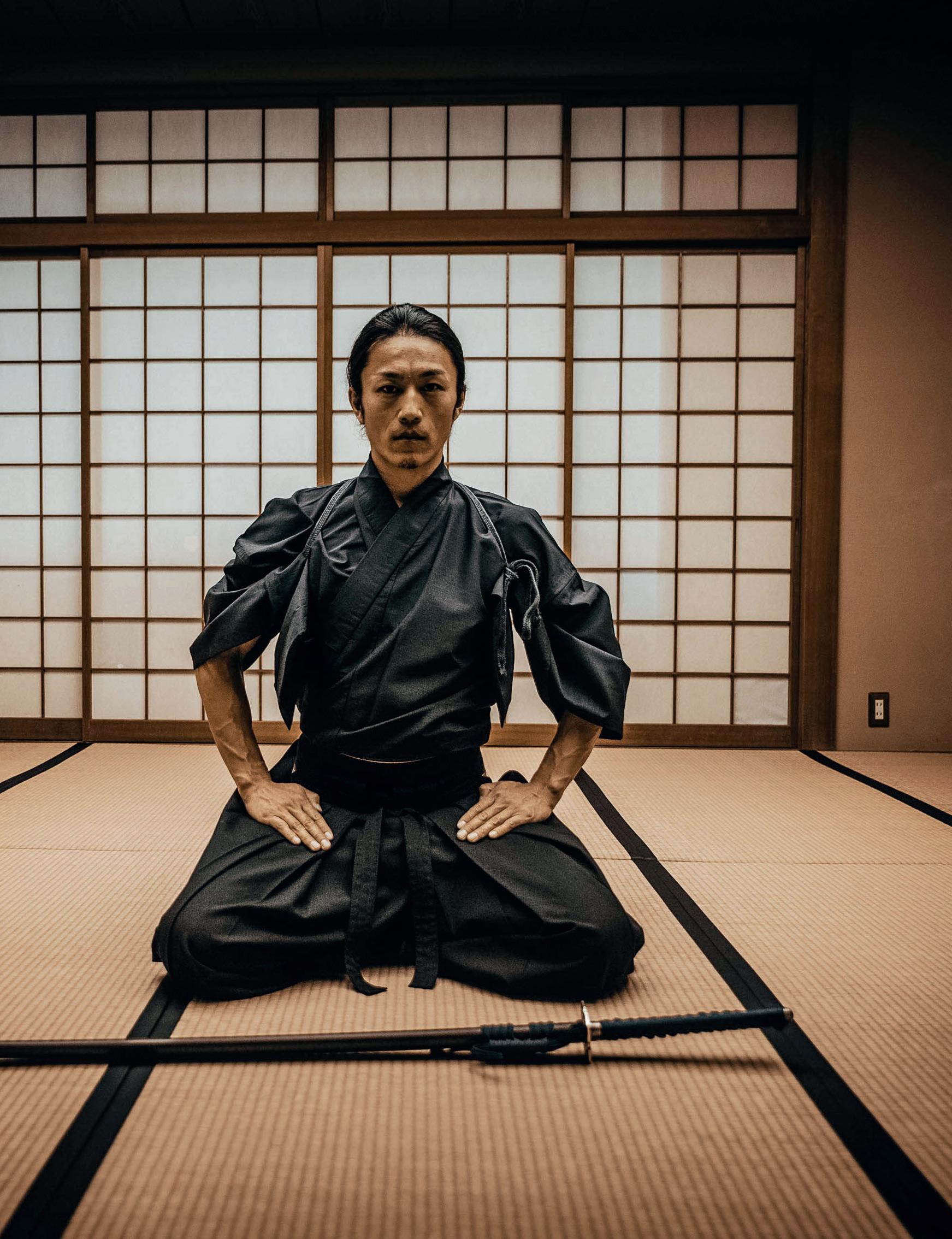
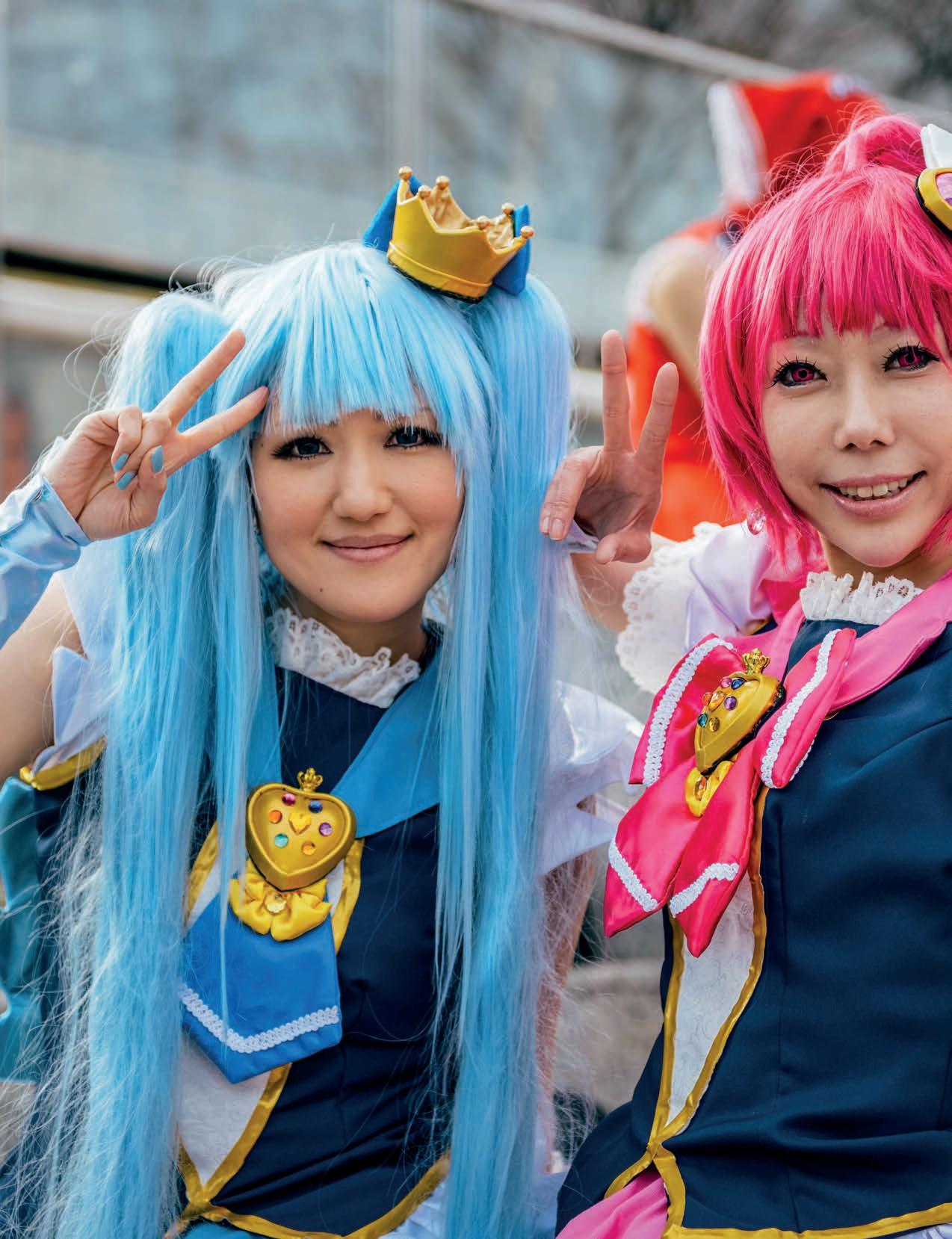
It has frequently been said that one day the geeks will inherit the earth.
Sometimes in Tokyo you could be forgiven for thinking that this has already occurred.
The Japanese capital is steeped in otaku (geek) culture with totems such as anime, manga, cosplay, and video gaming a colourful and often dominant presence in many of the city’s more youth-centric enclaves.
Otaku culture is a subculture that originated in Japan and has spread to other countries. It is characterized by a strong interest in anime, manga, video games, and other forms of pop culture media. Otaku culture is often associated with a lifestyle that revolves around these forms of media, and it is often associated with a strong sense of community.
Otaku culture includes a wide range of different interests, such as cosplay, collecting figures and other merchandise, attending conventions and events, and participating in online communities. Many otaku are also involved in creating their own fanworks, such as fan art, music, and videos.

Otaku culture is often seen as a subculture that is separate from mainstream culture, and
it is often associated with a sense of being an “outsider” or “geek.” However, over the last few decades, otaku culture has become more mainstream in Japan and other countries, and it is now considered to be a significant part of pop culture.
Otaku and its many symbols can be discovered around the city and a tour of its many hotspots is a must for anyone fascinated by the often-sublime inspiration that feeds into the subculture.
Hard by Tokyo Station is “Character Street”, a thoroughfare lined with stores fixated on different anime characters and series.
Other centres of otaku culture, meanwhile, include Harajuku, Tokyo’s youth fashion mecca, and Akihabara where dozens of shops are devoted to anime, manga, figurines, card games and other collectibles.
There are several places in Japan outside of Tokyo where visitors can experience otaku culture. Prime geek-spotting territory includes Nipponbashi in Osaka, which is well-endowed with anime and manga shops, and Mandarake Complex in Nagoya.

Japan’s rivers and mountains turn pink and white with the flowering of cherry blossoms or sakura. Japan’s most famous seasonal attraction blooms from south to north, beginning in Kyushu in March all the way to Hokkaido in May.
In Kansai, both Osaka Castle and Philosophers Path in Kyoto are incredible places to view the cherry blossom further down the country and are only a short train ride from each other. Head to both locations early in the morning for your best chance at photos without the crowds.
Nachi Falls is quite a journey out of Osaka (around four hours), and really requires an overnight in the quiet fishing village of Nachi in order to be at the waterfall early in the morning. A road from town leads straight to the falls, and if you plan well, you might be the only ones there. Use the pagoda and the foreground cherry blossom trees to frame the shot of the waterfall, and if you can go on a foggy morning, even better.
Mount Yoshino is Japan’s most famous cherry blossom spot, and people travel far and wide for the chance to view the incredible trees from the mountain. It is located in Nara Prefecture, but can take a little while to get there. Mount Yoshino has over 30,000 cherry trees planted on the slopes of the mountain, and the whole landscape turns bright pink for just a few short weeks a year. On arriving at Yoshino Station, head up the mountain to the viewing platform to witness the vastness of the cherry blossom season.
Between late April to early May, the springtime cherry blossoms of northern Honshu come alive with their gentle, pink resplendence. A week-long tour of the region takes travelers to some of the best sites in the country for viewing the blossoms. These include Kajo Park in Yamagata city, Kitakami Tenshochi Park, Kakunodate, and Hirosaki Castle. The region’s later blooming season means smaller crowds and cheaper tickets.

Zen Buddhism may have originated in China, but it is more readily identified with Japan and has influenced the culture and practices of the nation over the centuries.
It emphasizes the use of meditation to achieve enlightenment and places a strong emphasis on self-discipline and self-reliance.
Zen Buddhism is unique to Japan in that it is heavily intertwined with the culture and history of the country, and has had a significant impact on Japanese art, literature, and architecture.
One of Zen Buddhism’s most compelling aspects are its incredible Zen gardens, also known as karesansui
They are distinct for their use of symbolism to convey a sense of the infinite. For example, the use of rocks and gravel may symbolize mountains and rivers, while the use of sand may symbolize the ocean. The gardens are often designed to be contemplative spaces, and visitors are encouraged to take their time and engage with the garden on a deeper level.
Zen gardens are also known for their simplicity and minimalism. They are often designed to be viewed in silence, and the absence of any plants or flowers is meant to symbolize the impermanence of life. The
gardens are also often designed to be changed and rearranged, representing the idea that life is constantly in flux.
Choice places to get up close and personal with Zen Buddhism are scattered around Japan. Indeed, guests can enjoy exclusive access to a Buddhist temple to experience zazen meditation — an ascetic form of training for monks.

Otherwise, Kyoto, the former imperial capital, is the obvious place to get underway with an exploration.
Estimates put the total of Buddhist temples in the city at over 1000. Among them are exquisite examples of temple architecture such as Kinkaku-ji, the city’s famed Golden Pavilion and Kiyomizu-dera, an ancient structure with origins in the 8th century.
Arguably even more enchanting are the mesmerizing Zen-gardens that are attached to the temples. The rock garden at Ryoan-ji Temple is undoubtedly the most famous of these but other peaceful expanses can be found at Ginkaku-ji, Okochi-Sanso Villa and countless other spots.
Just south of Tokyo, in Kamakura, is Engaku-ji, known for its gorgeous garden and the wooden statues of the 16 arhats within its main hall.

 Photo by Aman
Photo by Aman
Coffee culture may have encroached around Japan. But for traditionalists, a good old fashioned tea ceremony still represents the ultimate drinking tradition.
The Japanese tea ceremony (sado or chado: meaning “the way of the tea”) is a traditional ritual that involves the preparation and serving of matcha green tea.
The ceremony has its roots in Chinese tea culture, which was introduced to Japan in the 9th century. However, it wasn’t until the 12th century that the ceremony developed into a distinct Japanese art form.
The tea ceremony became popular among the samurai class in the 16th century and later spread to the merchant class.
The tea ceremony is still practiced in Japan today, and you can experience it at a traditional tea house, or “chashitsu,” or at a special event, such as a cultural festival or tea ceremony class. Many temples and shrines also offer tea ceremony experiences.
Tea ceremonies are significant for several reasons. First, the ceremony is steeped in symbolism and ritual, and each aspect of
the ceremony, from the placement of the tea utensils to the way the tea is prepared, has a specific meaning. This gives the ceremony a deep spiritual and philosophical significance.

Second, the tea ceremony is seen to cultivate inner peace and harmony. The slow, deliberate movements and focus on the present moment required in the ceremony are believed to help practitioners achieve a sense of calm and balance.
Third, the tea ceremony is also considered an art form, and the tea master is seen as an artist who creates a beautiful and harmonious environment for the guests to enjoy. The tea ceremony is also considered a way to showcase one’s hospitality and generosity.
Finally, tea ceremonies are also important in Japan’s social context. They are often used to entertain guests, build relationships and network with others. It is a way to show appreciation and respect to others.
Popular places for visitors to experience tea ceremonies include Kyoto and Uji, which are known for their rich tea culture and many traditional tea houses and temples.




First off on our quick-stop photo tour of Kyoto was Kiyomizudera Temple. As it goes with many wellknown photography spots these days, it’s best to arrive here early. We opted to cycle there before sunrise and were lucky enough to have the whole place to ourselves. Whilst the temple itself looks great any time of the day, the backstreets and surrounding pagodas come to life as the sun rises, and the stillness adds to the serenity.
Formerly Japan’s capital from 794 to 1868, Kyoto is a city brimming with historical and cultural significance. Today, the city is filled with over 2,000 religious buildings and shrines, and the unique aesthetic of culture and history is what makes Kyoto a must-see destination for so many travelers to Japan. As a photographer, trying to get the right shots in one day (and the following morning) is difficult – but not impossible.

We then hopped on a short train ride to the quaint town of Arashiyama, which has been a popular holiday destination for centuries. The town itself is charming, but it’s the endless array of temples and quaint tea houses that are the real draw to this beautiful spot, as well as the celebrated bamboo forest. We managed to arrive just before the crowds gathered, and were happy to be leaving as they started flocking in their rented traditional Japanese clothing for photos. On the way back to the station, we strolled past rickshaws and punting boats bobbing down the charming Hozu river. If you’re lucky, you may even be able to catch a glimpse of traditional cormorant fishing.

On our last day in Kyoto, we took an early morning, coffee-fueled cycle to Fushimi Inari, the network of thousands of torii gates winding to the top of Mount Inari. We decided to arrive for sunrise, so we could catch the priest in his robes gracing the shrine tunnels for his morning chants. Sure enough, at 7am sharp, not only did we encounter the priest, but also a handful of other photographers all running after him trying to shoot like a pride of hungry lions.
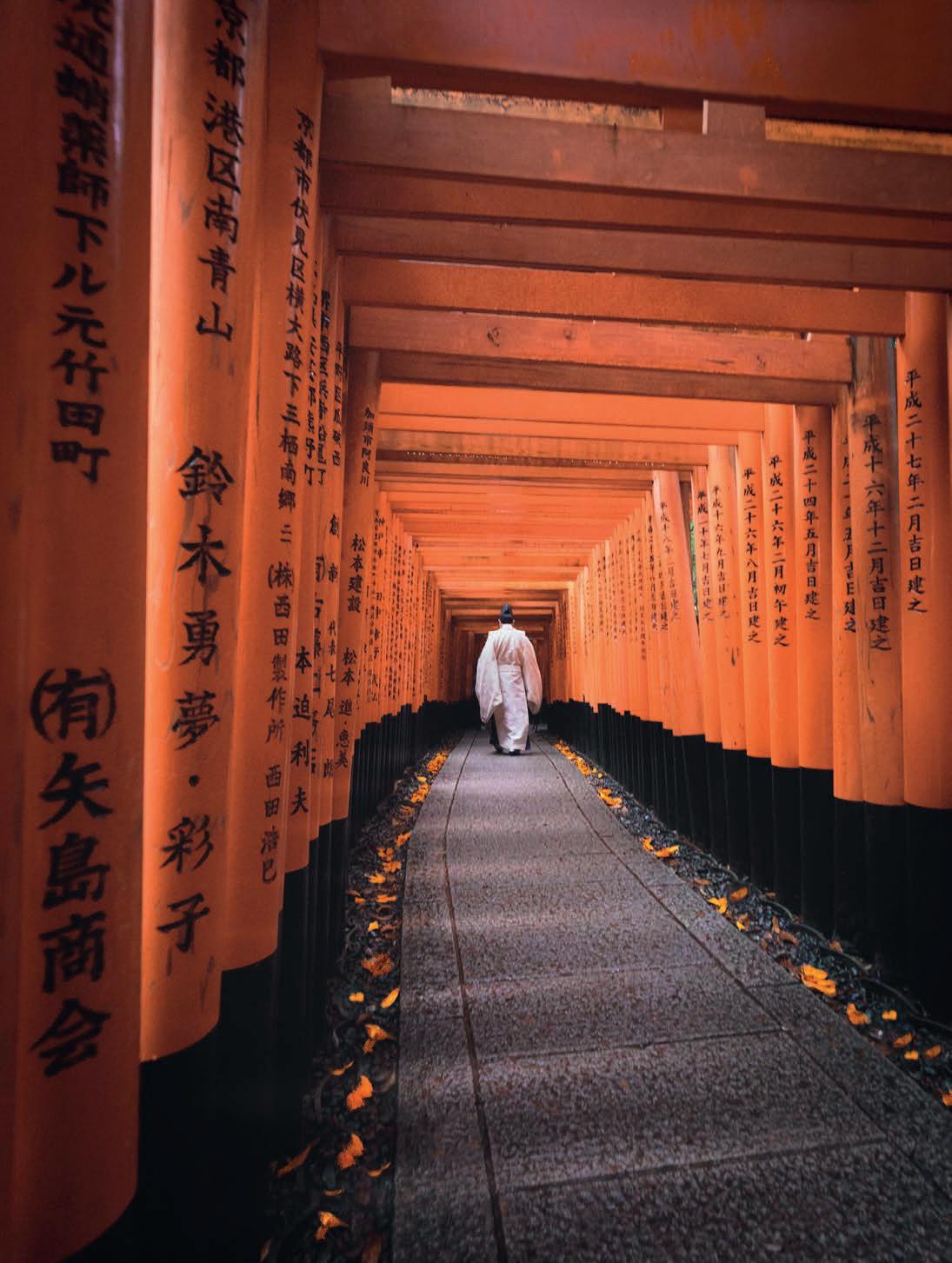
One of the most popular sites in Kyoto, this Zen-Buddhist Temple looks incredible just about any time of the year. Built in the 14th century, the Golden Pavilion shines on a sunny day, and looks majestic in the winter’s frost. Unfortunately, just about any time you go is going to be busy, but luckily that doesn’t hinder the quality of the photographs. After catching this magnificent temple amongst golden autumn leaves, I’m looking forward to heading back in the snow next year.
There’s no better way to end a day filled with sightseeing than wandering the historic streets of Gion district, hoping to spot one of the few remaining geisha on her way to her local tea house. Many come with hopes of getting a shot of a geisha, but few succeed. We were lucky enough to spot two during the hour we spent in Gion, although only one was a fully qualified Geisha. The trainees tend to have flowers in their hair where the geisha don’t, have a long kimono belt, and often wear platform sandals, whereas the geisha wear flats. As we stood silently on the side of the alleyway, the geisha glided in front of us, almost too quickly to take a photo. After three visits to Gion without spotting any, we can confidently say that perseverance is key when spotting geisha in Gion.


Inspired by Japan’s traditional ryokans, the Ritz Carlton Kyoto delivers on style, service, comfort and cuisine in a beautiful riverside setting.


Japanese whisky’s rising pedigree has bred some of the finest single malts and blended spirits in the world. Adding to this impressive array of places to imbibe are the peregrine pleasures of the country itself– its wonders, its bucolic scenery, and its careful utility. Here are some of the best distilleries to brush up on Japan’s impressive whisky credentials.

The snow of the Japanese Alps is best seen in January, but the taste of that melted snow is found in a single malt Suntory Hakushu. Rich, sweet, and slightly smoky, the 12-year Hakushu is an ideal drink for Japanese whisky beginners. Owned by the whisky geniuses at Suntory, Hakushu’s prime, fir-surrounded location is found a short train ride from Tokyo, nestled amongst gentle pine forests and gently sloping mountains. Between the constant whistling of the bird sanctuary and the wood-gated White Terrace dining facilities, Hakushu combines peace and accessibility.
Sadly, there are no English-guided tours, but thirsty guests will be mollified by the audio guides. The most common Hakushu is the 12-year, and while one will want to try it neat first, this modest drink can make an excellent mint highball – a popular cocktail for whiskies in Japan. Local sites and experiences of interest include skiing at Wing Hills and Takasu Snow Park, and mountains are found in every direction. Reservations at the Hakushu Distillery are highly recommended.
Japan’s whisky-producing pedigree can be witnessed first-hand at numerous distilleries around the nation



Whisky lovers at Mount Fuji will want to check out the Mt. Fuji Distillery. Chosen for the site’s climate similarities to Scotland, the distillery began in partnership with Chivas, Seagram’s, Four Roses, and Kirin. Keen observers will have noticed that much of Japanese whisky shares a history with Scotland—hence it is “whisky” rather than “whiskey” when it comes to spelling. Other than the drinking facilities and the fine drams, one thing that makes this destination different from others is its proximity to five – yes, five – golf clubs. One might finish up at the Fujiheigen Golf Club, get some snaps of the Yama Shrine, and then walk right into the distillery for a day of drinking. On the other side, a stay at the Remote Lands favorite Gora Kadan ryokan is recommended. Tours of the distillery are available every day except for Wednesdays. Using the water falling from the famous Mouth Fuji, the Fuji Sanroku 50 is recommended – a warm, sweet, thick whisky with hints of vanilla, perhaps even preferable to the 18-year blend Fuji Sanroku. Yamanashi prefecture, home to Mount Fuji, is also home to several notable wineries as well as distilleries.

The piece d’ resistance: Suntory Yamazaki Distillery. Established by Suntory founder Shinjiro Torii in 1923 and located between Osaka and Kyoto, Yamazaki is inarguably the best distillery visit in Japan. The whisky uses waters from Mount Tennozan, at the foot of which the distillery sits. Guests will enjoy the history, crafting, and process of the Yamazaki distillery tour, but it is at the Whisky Library visitors should expect their eyes to pop out of their heads and start lapping at the sight of more than 7,000 beautiful bottles. Due to the site’s popularity, booking can be difficult. The tasting counter includes 80 whisky varieties, where visitors can try limited edition whiskies specific to the Yamazaki distillery. The only downside to this distillery is that there are no food options. One might wax lyrical about the Yamazaki 18 – or perhaps even the extremely rare 25 – but it’s the popular 12-year Yamazaki with which most travelers will be familiar: a fruity single malt known the world over. This is where Japanese whisky began.

Nikka Whisky Distilling owns the Yoichi distillery, found on the northern island of Hokkaido. Up in that cold of Japan’s northernmost island, the winters are bracing and the culture runs deep. Found near the chilly waters of the Sea of Japan, the Yoichi is a more urban area than many of the other distilleries mentioned herein.

Yoichi produces some of Japan’s finest whisky. Their flavors come with an almost ubiquitous peat flavor that often goes unappreciated by the novice. Found just 50 kilometers from Sapporo – the site of one of Japan’s most interesting northern cities and the site of the yearly snow festival – Yoichi whisky staves off that winter cold. The tradition of Yoichi is continued on from Masataka Taketsuru, who brought his love of whisky back from a trip to Scotland in 1918.
The Taketsuru Pure Malt comes in 17- and 21-year varieties, but it’s often the spicy – and light on the peat – of the Nika Pure Malt Black that draws most curious whisky lovers. The blended Nikka From the Barrel is mixed with Nikka’s other distillery in Miyagikyo near Sendai in northern Japan. One of the brand’s more innovative tastes is the Coffey Grain, produced from a “coffey still” imported from Scotland in the 1960s.

The Park Hyatt Niseko Hanazono feels like it’s on another level. A stunning building in a spectacular natural setting, it’s close to some phenomenal skiing, but is a worthy destination year-round.

The southwesternmost of Japan’s main islands, Kyushu is one of the country’s most overall appealing areas.
Active volcanic peaks such as mighty Mount Aso pour down to rocky, lush, and near-tropical coastline, steaming onsen punctuating the landscape over almost every mossy hillock, while attractive cities such as Fukuoka and Nagasaki provide a cosmopolitan urban edge.

Stunning nature can also be found on Shikoku, the smallest of Japan’s four main islands. Pilgrims have walked clockwise around the island for more than a millennium, following in the footsteps of Buddhist saint Kobo Daishi. And visitors who make the effort to visit southern Japan usually feel blessed too.
Yet despite these wonders, the south has traditionally lagged behind other areas in Japan when it comes to attracting tourists.
As the main entrepot to the island, the vast majority of international visitors start their Kyushu odyssey in Fukuoka. The sixth largest city in Japan, on one hand, it is a burgeoning metropolis with all the modern conveniences of a contemporary conurbation. Conversely, it is also one of the most venerable places in Japan, with a trading history dating back some 2000 years.
Although it is a fair old size (a recent census put its population at over 5million), the city feels manageable, with an efficient metro system adding to its convenience.
Kyushu and Shikoku offer charismatic cities, a wealth of spiritual intrigue, and some of Japan’s most heartbreakingly beautiful nature

Gion is one of the most storied areas of Fukuoka with several historic shrines and Buddhist temples. It is also home to the annual Hakata Gion Yamakasa Festival where beautifully decorated intricate floats race along a five-kilometer-long course through the city.

While that celebration can be raucous, the opposite is true of Shofuku-ji, a Zen temple founded in 1195 by Eisai who introduced Zen and tea to the country. Although the buildings are closed to the public, the tree-lined stone paths are perfect for some quiet contemplation.
One of Kyushu’s greatest assets is Yakushima, a subtropical island located just off the coast. Taking the ferry to Yakushima is like a portal to another, more primeval, world. The island has been declared a UNESCO Natural Heritage Site and constitutes a unique area of almost completely virgin wilderness.
Unsurprisingly, this forest-covered haven is a perfect fit for hiking and outdoor enthusiasts, offering visitors a combination of mountain and forest trekking. Options include an ascent of Mount Kuromidake, where amazing views can be savored from the summit. A less strenuous alternative involves strolling through the cedar forest and its awe-inspiring ancient trees.

Elsewhere, in sweet, picturesque Nagasaki, tragedy contrasts with a colourful trading history. Kumamoto’s castle is one of Japan’s finest fortresses, and volcanic Aso is the world’s largest caldera (both were heavily damaged in earthquakes in 2016). Saga Prefecture boasts three legendary pottery centres. Steam pours from the earth in Unzen and Beppu, Miyazaki’s Nichinan coast boasts vistas, monkeys, and Japan’s best surfing, while Kagoshima, the heart of the Meiji Restoration, smolders with active volcanoes. Kirishima, meanwhile, is known for nearby hot-spring resorts like Ebino Kogen and Kirishima Onsen.

Over on Shikoku, things are equally beguiling. The island’s top draw is the 88 Sacred Temples of Shikoku, Japan’s most famous pilgrimage. But there are a host of other highlights to savor.


Considered remote and isolated for centuries, Shikoku is now easy to access from Honshu via three impressive bridge systems built in the last three decades.
The island’s stunning Iya Valley, rugged Pacific coastline, mountain ranges, and gorgeous free-flowing rivers all beckon to be explored with hiking boots, kayaks, and surfboards. There’s ample scope to appreciate the remote temples, historic castles and gardens, excellent regional cuisine, and modern pleasures of Tokushima, Kochi, Matsuyama, and Takamatsu.
One of Japan’s best underwater options is the wreck dive at Atami on the Izu Peninsula near Tokyo

Japan doesn’t often make it up there on lists of top dive destinations, but with more than 2,000 dive sites and 34,000 kilometers of coastline, it is definitely worth the visit.



On Honshu Island, and only about 40 minutes from Tokyo by bullet train, is the lesser-dived Atami on the Izu Peninsula.

Atami is an onsen resort town on the eastern side of the Izu Peninsula, just south of Hakone’s many excellent ryokans and ideally placed for a stay at the Asaba. What better way to end a day of diving than by relaxing in a hot spring?
Atami is definitely more famous for its hot springs than its diving, though it is definitely worth it to get under the waves. One of the main underwater attractions is the wreck of the Asahi Maru, known locally as the Chinsen, which directly translates to ‘wreck.’ It is one of the only diveable shipwrecks off Honshu Island and truly is a dive never to be forgotten.
The Chinsen was a barge carrying large rocks for the harbor walls when it sunk during a typhoon that hit the area about 30 years ago. The 120-meter-long cargo vessel split in two and the sections now lay at a depth of between 25 and 30 meters. It also pulled two tugboats down with it when it sank. As you slowly drift down, following the guide rope into the depths of the ocean, this superstructure seems to rise out of the slightly murky water to meet you at around 21 meters.
The wreck is covered in hard and soft coral. In the illumination of the torch light, the coral turns into a fantasy world of vibrant colors. Pinks, purples, oranges, yellows, and whites decorate every possible surface of the wreck. Small critters hide among the coral and in the many nooks and crannies of the wreck. Divers can spot moray eels, stone fish, margarita basslets, half-lined cardinals, spider crabs, and many nudibranchs with schools of fish swimming around.
For qualified and experienced divers there are a number of places to penetrate the wreck with plenty of natural light reaching the inside. The outside of the wreck is simply spectacular and there are a few swim-throughs that make penetration unnecessary. This offers a small conciliation to divers who aren’t confident enough to go into the wreck itself.
In the illumination of the torch light, the coral turns into a fantasy world of vibrant colors. Pinks, purples, oranges, yellows, and whites decorate every possible surface of the wreck
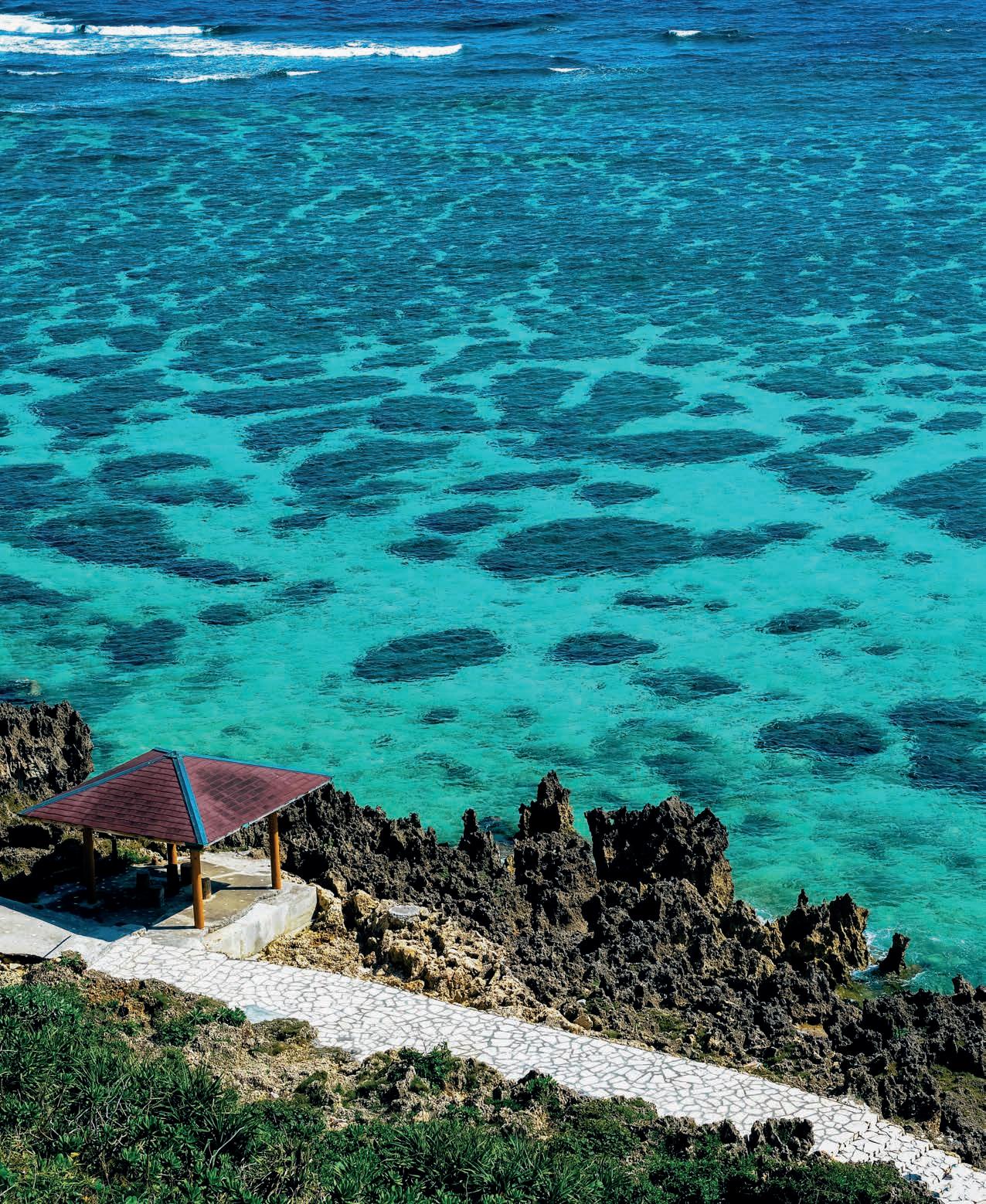
Although Japan is more famous for its super-charged cities and hotbeds of traditional cultures, it is not lacking in outstanding coastal destinations.
And serious sun-worshippers will be bewitched by the options in the country’s southernmost prefecture Okinawa. Known for its friendly, sub-tropical, climate and string of beaches the province is Japan’s premier spot for beach bums.
Okinawa is also highly regarded for its diving, with coral and marine species as varied as that of Australia’s Great Barrier Reef.

Here, visitors will find average temperatures of 74 degrees and more than 100 islands stretched over 700 kilometers of ocean – roughly equivalent to the distance between Singapore and Penang. Given all this scope it is no surprise that options for kicking back are plentiful.
Located in the southwest corner of Miyako Island, Yonaha Maehama Beach stretches for six and a half blissful kilometers and has clear, shallow water for swimming and water sports.
Other killer beaches can be found on the starfish-shaped island of Amami-Oshima and the Keramas, a group of 22 little outcrops located just north of Naha, the prefecture capital and main transport hub.
One of the most popular islands to visit in the Keramas is Zamami. The island is popular with whale watchers from December to early May. In the summer, beaches like the stunning, half-crescent Furuzamami attract holidaymakers from across Asia and divers looking to swim with sea turtles. Today, it’s a slow, sleepy place with a population just under 1,000 people.
In 1945, however, it was an important war theater – a prelude to three months of attacks on Okinawa.
The invasion of the Kerama Islands marked the beginning of the Battle of Okinawa. On March 26, 1945, Allied forces reached Zamami, meeting stiffer resistance than they anticipated. The three-day battle that ensued left hundreds dead, including 404 civilians, about half of whom committed suicide to avoid capture.
On Tokashiki, the largest of the Kerama chain, the landscape is no less stunning and a legacy no less complex. On March 28, 1945, Japanese Imperial Army forces ordered over 300 islanders to commit suicide, a moment solemnly commemorated each year.

Visitors might it hard to reconcile that dark chapter in history with the friendly locals they run into at the tiny local izakayas. Or with the brilliant turquoise waters, tranquil hikes, and abundant scenery.
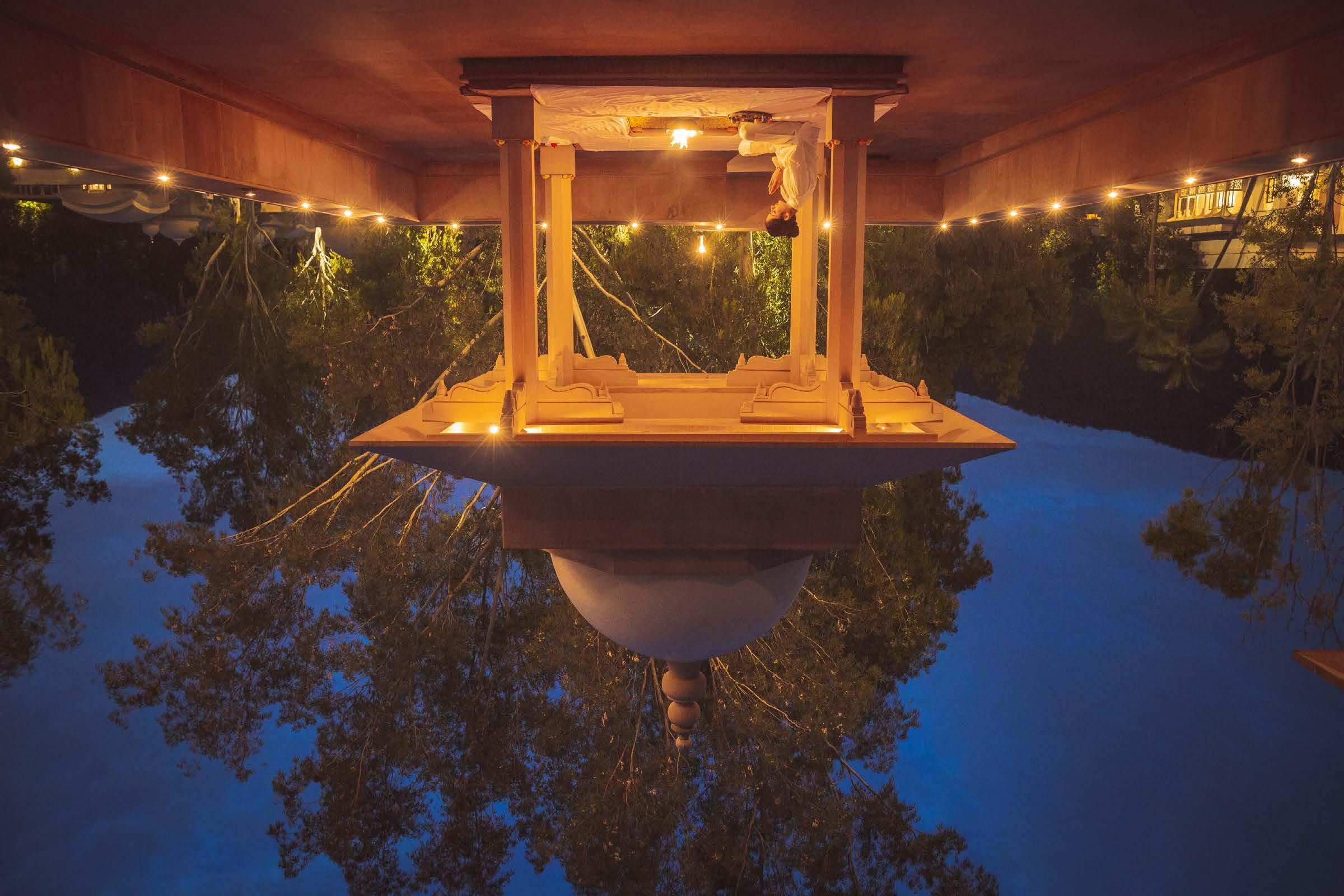

Okinawa isn’t just about glorious seascapes. The prefectural capital Naha is underrated. Historians consider Shurijo to be the Ryukyu Kingdom’s most important castle. It was abandoned in 1879, after the Japanese empire annexed the Ryukyu Islands. During World War II, the Imperial Japanese Army had set up its headquarters underneath it, and so American forces
shelled it relentlessly. They set fire to it and left it in ruins.
The castle was nearly destroyed sever al times, but today it still proudly overlooks Naha.
Next to the castle is Zuisen. Operating in the shadows of Shurijo since 1887, the stone-walled distillery still produces tradi tional awamori – the fiery rice-based spirit that has become a symbol of Okinawan culture.
The capital is a good place to sample Okinawa’s unique cuisine, like goya chanpuru (stir-fried bitter gourd with egg), (sweet-salty pork belly simmered with bonito stock and awamori), ice cream and snacks made from beni-imo (purple sweet potato), and, a byproduct of the postwar American military occupation, spam mu subi, and taco rice.
All along the Kokusai Dori—“Inter national Road,” Naha’s main tourist and shopping street, named after the former Ernie Pyle International Theater that was built here after the war—people eat, drink, party, and buy souvenirs like shisa wa’s lion-dog figure) ornaments and aloha shirts. Modern Japan meets island life.




